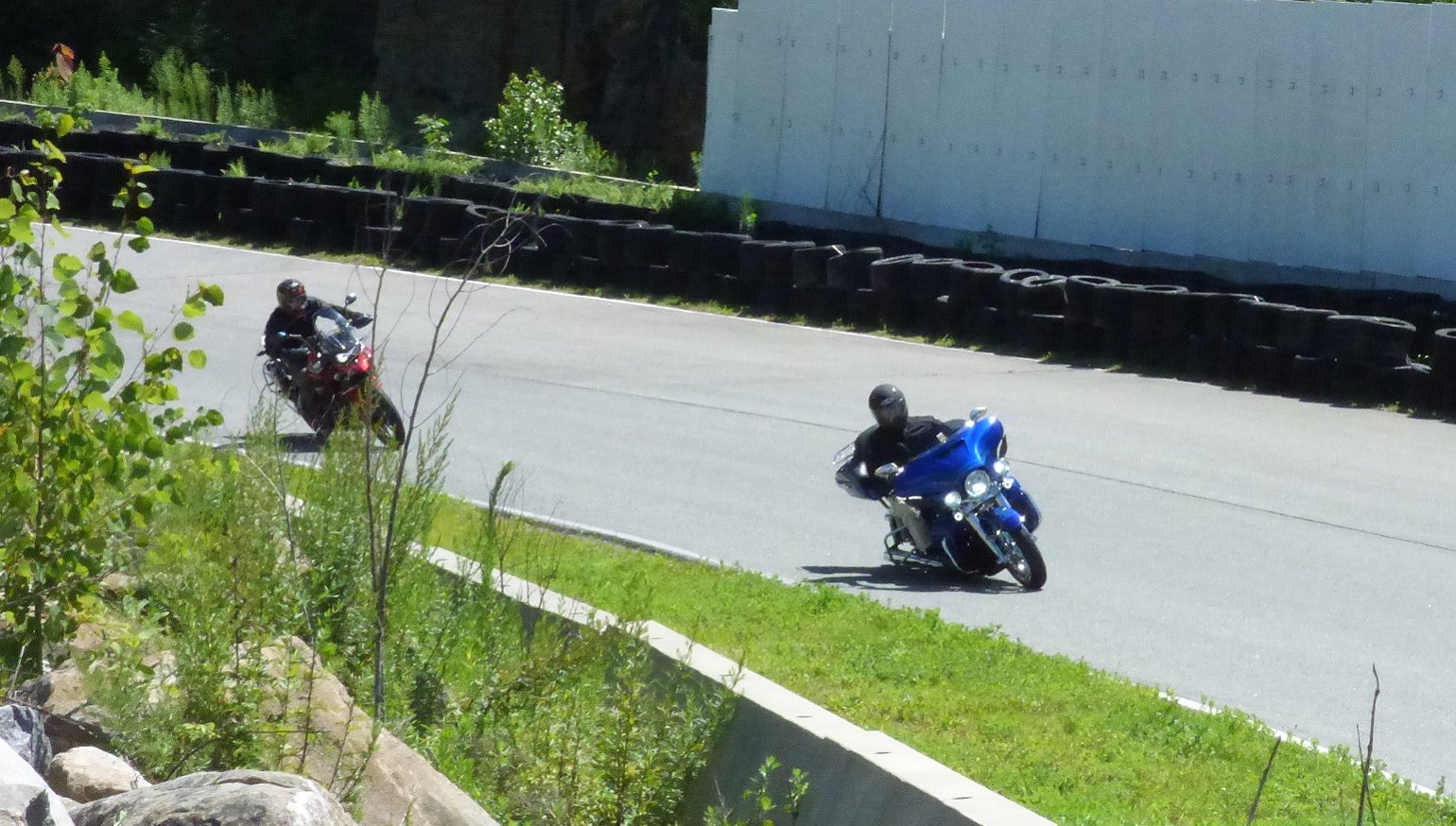When you think of all the inputs involved and instantaneous decisions that must be made — not to mention the cost of getting it wrong — riding a motorcycle has to be one of the more complex physical tasks most of us undertake. Yet at the same time, most motorcycle riders never feel the need to get any instruction on how to do it better.
What are the obstacles that keep us from seeking out training? There are several, but I believe one of them is ego. Those of us of a particular age and gender, specifically, are often reluctant to admit we don't know everything we need to know. "I've been riding motorcycles for 20 years, so why do I need training?" is a common attitude. But as Ken Condon, who runs Riding in the Zone training courses, regularly points out — and he's not the only one to say it — "Most people who have ridden 20 years have one year of experience repeated 20 times." They aren't progressing, just repeating the same habits, which may be good or bad.
There are other obstacles that deter riders from getting training, however, and one is the setting. Most courses take place in a controlled environment, for obvious reasons of convenience, predictability, and safety. Most of us, once past the beginner stage, don't think a day riding around cones in a parking lot sounds like much fun. And if you ride a big touring bike, a cruiser, or an adventure bike, you may feel like you don't belong at a track-based course, either. Sure, you can do it, but many riders don't want to be that odd duck. In this case, the common attitude is, "I'm no racer. Why would I go to a track day?"
Several years ago, Condon set out to address that obstacle to training by starting what he originally called Non-Sportbike Track Day Training, a day of street-focused training at the track for all of us who aren't riding sport bikes. That course has now been renamed Advanced Street Rider Training Days to better describe the curriculum and address the lingering biases and misconceptions many riders have about riding on the track. I'm curious about any kind of rider training, especially one that can reach riders who normally don't seek out instruction. So I threw a leg over the tall saddle of our non-sport-bike Aprilia Tuareg 660 loaner bike and went to Palmer Motorsports Park to take the course myself and see what it's about.
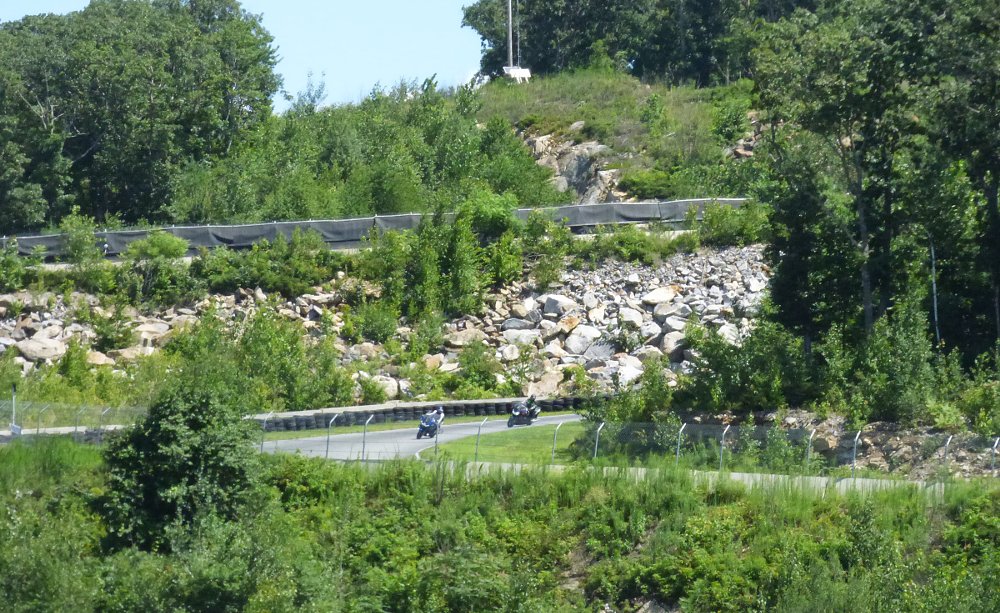
Training on the track to be better on the street
Palmer Motorsports Park is an unusual, 2.3-mile road course that loops over the top of Whiskey Hill Mountain in central Massachusetts. Palmer is the kind of place people go to turn laps in their Porsches for fun. The total lack of spectator facilities shows it was not meant for professional competition and the glaring absence of runoff makes it inappropriate for any kind of motorcycle racing. It's a dramatic and gorgeous location for a track day, however.
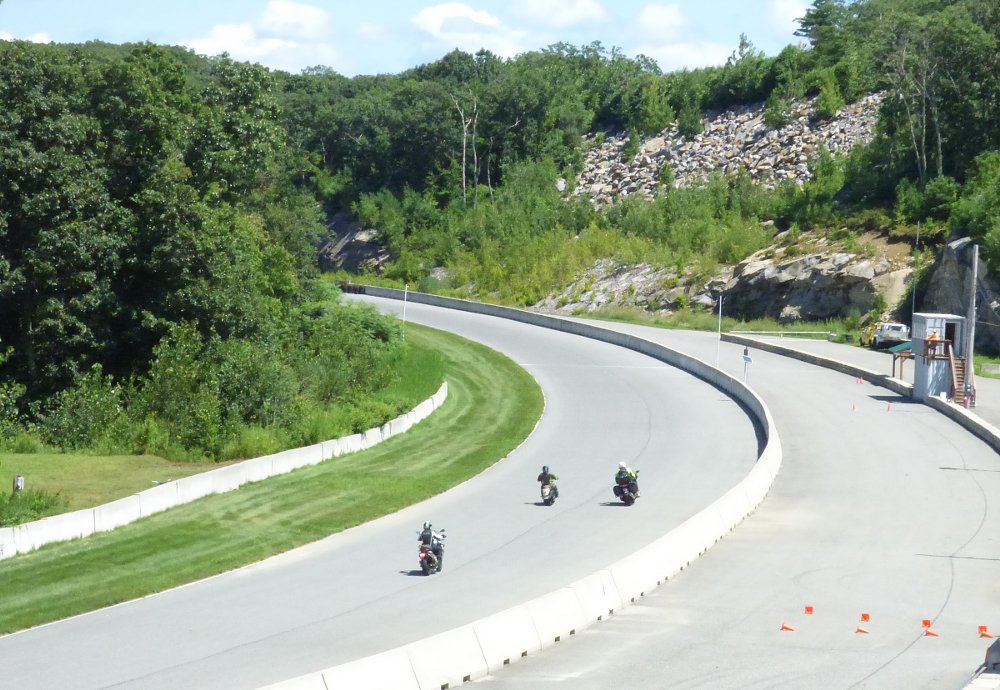
Wheeling the Tuareg over to tech inspection in the early morning sunlight confirms that I won't be riding with the usual track-day suspects. Sure, I've seen everything from a Honda Gold Wing to a homebrew Suzuki DR650-based supermoto at traditional track days I've attended in the past, but the crowd here is truly eclectic. Among the motorcycles getting ready to go on track are a BMW K 1600 GTL, a Yamaha FJR1300, an Indian Scout, a Harley-Davidson Softail Heritage Classic, and a Honda Africa Twin. There's even one intrepid soul on a BMW R 18. I try to calculate the lean angle on that one as I watch it go through tech inspection.
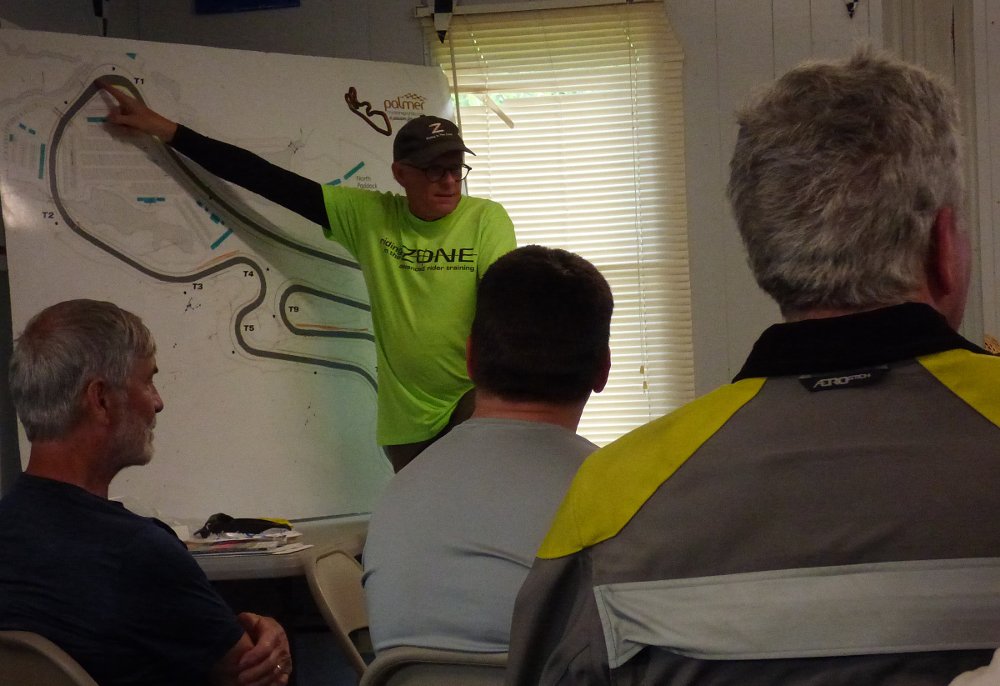
Condon runs two Advanced Street Rider Training Days per year at Palmer, one in May and one in August. Each accommodates up to 105 riders, who are split into three groups based on speed, like most track days. That's partly based on what kind of motorcycle you're riding, and partly on what, if any, past experience you have on track and how much experience you have on the street. A show of hands at the morning riders meeting indicates that many of the participants are about to experience their first day on track, but there are also some who have been to this event half a dozen times before.
The structure and curriculum of the Advanced Street Rider Training didn't throw any surprises at me. Like most track days that involve instruction, each group has a 20-minute session on track, followed by a session in the classroom where the instructors suggest points to work on in the next session, and then a short break to hydrate and rest up before you're back on track.
The curriculum covers predictable territory, as well. The instructors talk about using visual reference points and looking farther ahead to create the sensation of slowing down the speed. They talk about the transition from throttle to braking and back, as well as trail braking, which is hugely helpful on some of the steep, downhill turns at Palmer. One of the break sessions is devoted to body position, though they don't teach hanging off, roadracing stye, but rather just shifting upper body weight to the inside and making sure the head is turned to encourage looking through the turn.
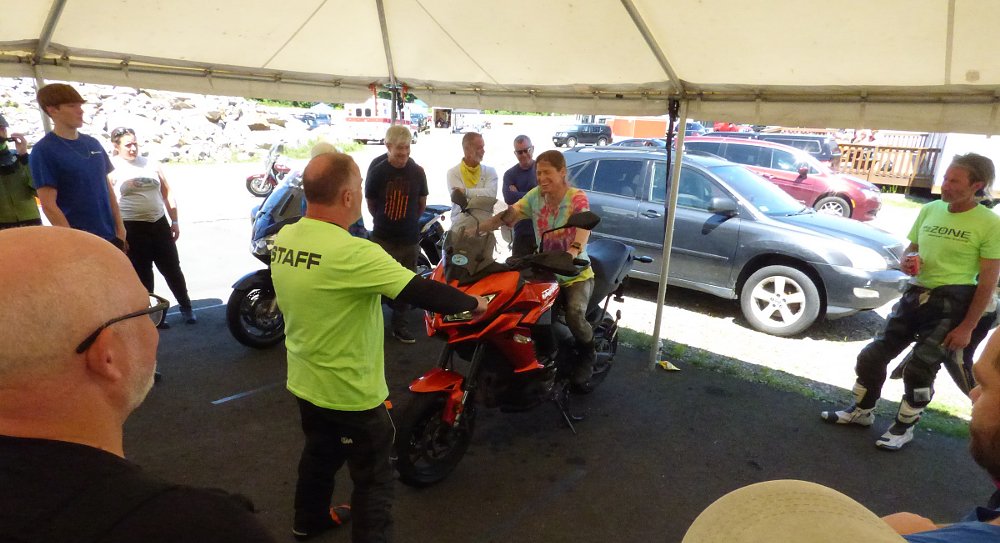
Where the course differs from most track-day instruction, however, is the focus on learning techniques that will make you a better, safer rider on the street, not get you around a race track faster. The classic racing line from the outside of the track to the apex of the turn to the outside of the track in one smooth arc, which dates back to the days of racing two-strokes and open-face helmets, is not even the fastest way around a race track anymore with many modern motorcycles, but it's certainly not the best way to get down a country road where the rider must deal with limited sightlines and oncoming traffic. Instructors use the track map to show you how a late apex maximizes your sightlines, sets you up to accelerate down the the next straight stretch of road, and doesn't aim you toward the center yellow line, where a texting driver could be encroaching.
"Our aim is to help you be better, safer, more skilled street riders," Condon told my group during one classroom session.
The other way the Advanced Street Rider Training differed from other track days and schools I've attended was in the overall ambiance and attitude of the participants. Many people who have never been to or seen a typical motorcycle track day have a warped mental image of it as a Mad-Max-style free-for-all where everyone rides at the limit and anything goes. That's not the case. No track-day organization that put on events like that would survive. But it is true that there are always some at a typical track day who will push too hard, get overly concerned about passing or being passed, and let their egos lead them astray into the gravel trap. The rule of thumb, Condon says, is that 5% to 10% of riders at a typical track day have some kind of crash. At the two Advanced Street Rider Training Days offered this year, not one rider went down. That says something about the approach of the organizers and instructors but it also says even more about the attitudes of the participants.
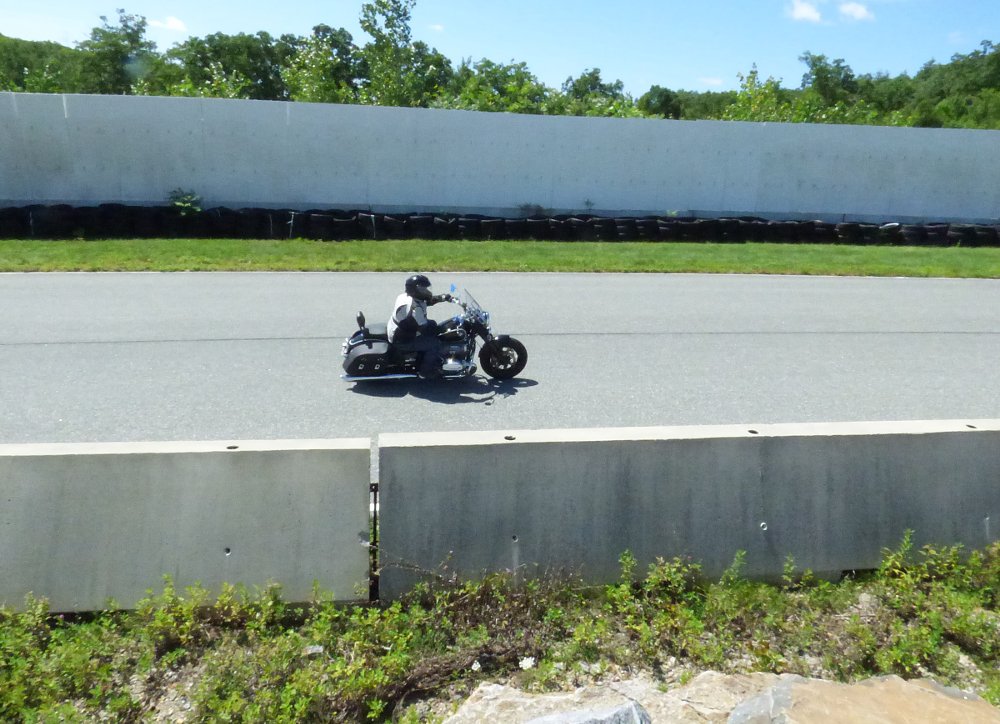
Overcoming obstacles to getting on track
Through Riding in the Zone, Condon offers training options that range from a parking lot course for beginners to group training on actual streets. Advanced Street Rider Training Days is just another way to bring instruction to riders who need it, in another venue.
But there are obstacles to overcome, starting with needing to convince riders that they'll benefit from training and they don't already know it all. "Most of my career has been trying to convince somebody to buy a product they don't want. And that's training," said Condon, who also wrote books on riding technique and wrote columns for Motorcyclist and Motorcycle Consumer News magazines in the print days.
While the track is a great venue for learning, it is also the first obstacle that must be overcome with many riders. That's a reason for the name change.
"People heard 'track day' and all they thought of was 'race track' — which was the environment, but all they think of is the 'race' part of 'race track' and they're on a Harley bagger. So they disassociate immediately, just by the name," he said.
After six years of running these sessions, it's mostly word of mouth that keeps them going. Even then, many street riders are still reluctant.
"I keep hearing from our customers how hard it is for them to convince their friends to do it, even though they've experienced it," Condon said.
Another obstacle is gear. Many street riders are reluctant to make an investment in gear they don't think they'll use on the street. So while Advanced Street Rider Training requires full riding gear, it's more lenient than regular track days. For example, modular helmets and riding jeans with armor are acceptable.
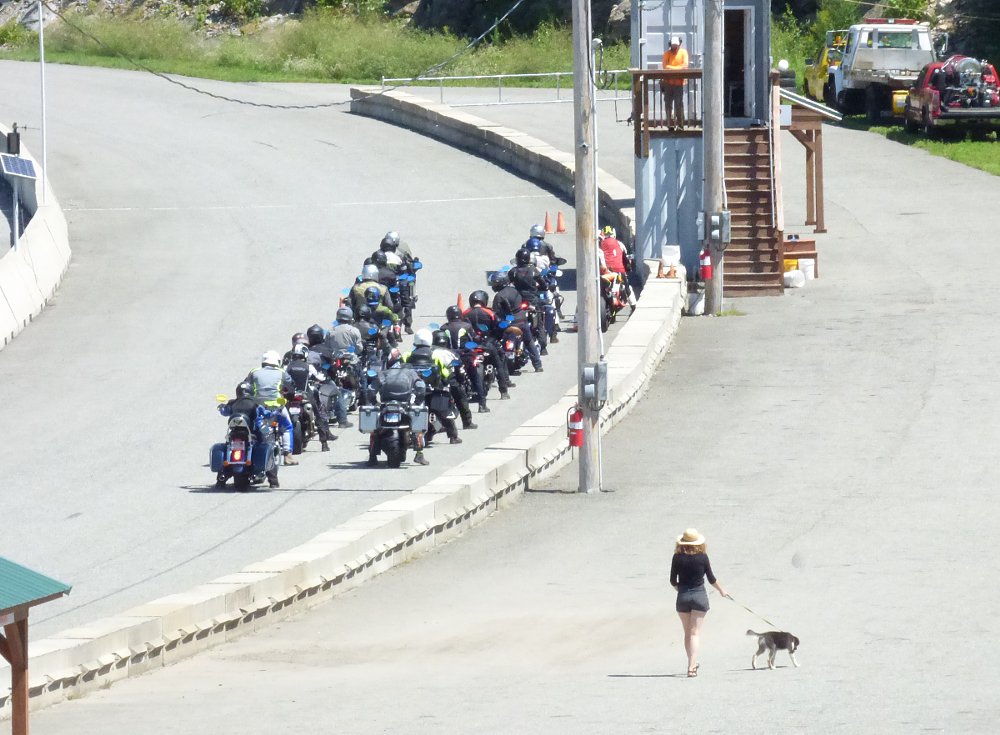
Whether we know it or want to admit it, we all can benefit from some instruction, if only to have another set of eyes making sure we're really practicing the good habits we think we're practicing. Even top professional racers use rider coaches, and none of us are better riders than they are. That's why the focus of Advanced Street Rider Training is to break down the hurdles that keep people from getting the instruction they need to be better riders.
"It's not only about being safer," Condon said. "The safety aspect is almost something I put second. The benefit is that it's going to make your riding more enjoyable. You'll have more confidence."
Next year's dates for Advanced Street Rider training will be announced on the Riding in the Zone website around November. The cost of the one-day program is $350 and that includes lunch. You can also get a rebate through the Paul B. Scholarship administered by the BMW MOA, up to $250 for MOA members and $100 for non-members. If you're anywhere near New England and think you could benefit from some riding instruction, check it out. And if you think you don't need any instruction and you don't have any reason to go to the track because you're not a racer, well that's even more reason why you should check it out.

 Membership
Membership

